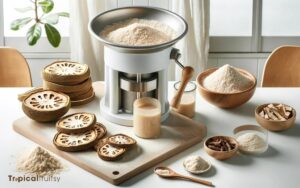How to Make Breadfruit Taco Shells? 7 Easy Steps!
The culinary landscape is ever-evolving, and the integration of breadfruit as a primary ingredient in taco shell preparation epitomizes this innovation.
Breadfruit taco shells offer a unique twist on a classic, providing both a gluten-free alternative and a novel flavor profile.
This guide is designed to walk you through the meticulous process of transforming breadfruit from its raw, starchy form into a malleable dough, which can then be shaped and cooked into crisp, delectable taco shells.
We will discuss the selection of the ideal breadfruit, preparation techniques, dough crafting, shell shaping, and cooking methods.
Additionally, we will explore ways to enhance the taste of your shells and offer tips for serving and storage.
Whether you are a culinary enthusiast or a professional chef, this guide aims to furnish you with the knowledge to create breadfruit taco shells with skill and confidence.
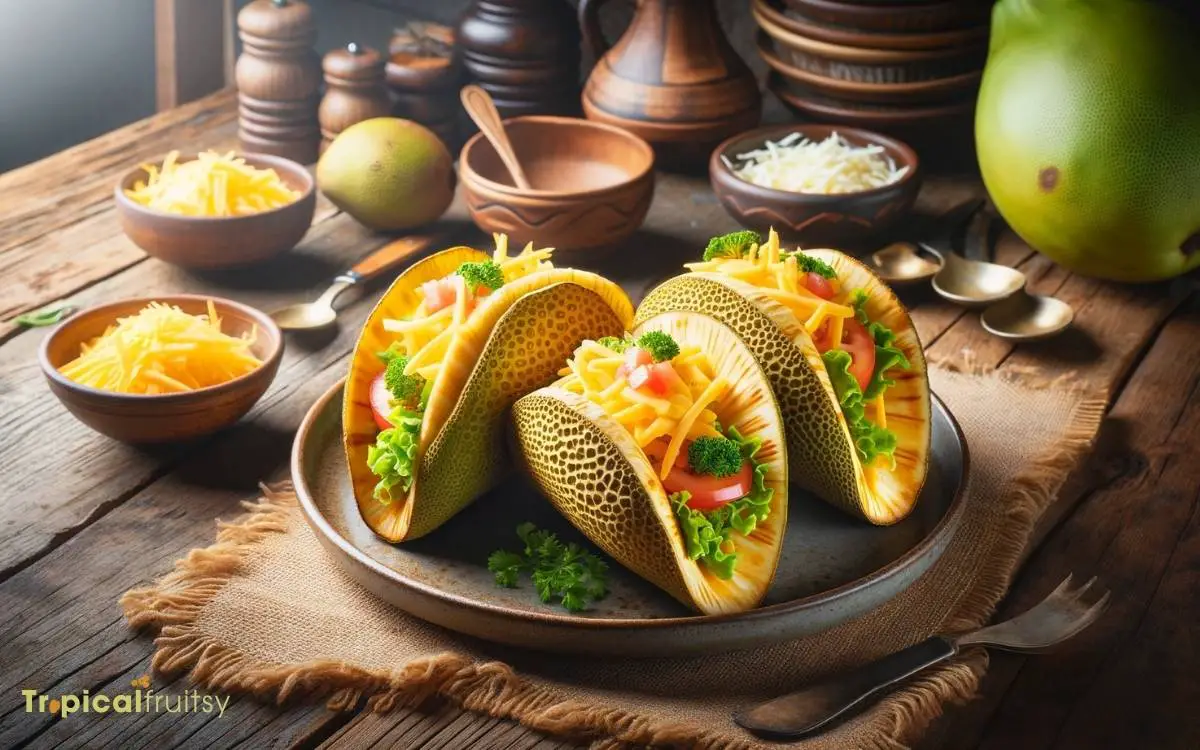
Key Takeaway
Step 1: Selecting the Perfect Breadfruit

Choose a mature, firm breadfruit with even green coloration to ensure the optimal texture and flavor for your taco shells.
When selecting the ideal breadfruit for this culinary application, one must engage in a meticulous inspection process.
The surface should be free of blemishes and irregularities, indicating a lack of internal bruising which can affect the uniformity of the cooking process.
An even green hue suggests that the starch content is at a prime state for conversion to the requisite sugars during cooking, providing a subtle sweetness and robust structure that is critical for a crisp and satisfying shell.
Gauge the firmness with gentle pressure – it should yield slightly but not be soft or spongy. The breadfruit’s size should also be considered for consistent shell dimensions.
Step 2: Preparing Your Breadfruit
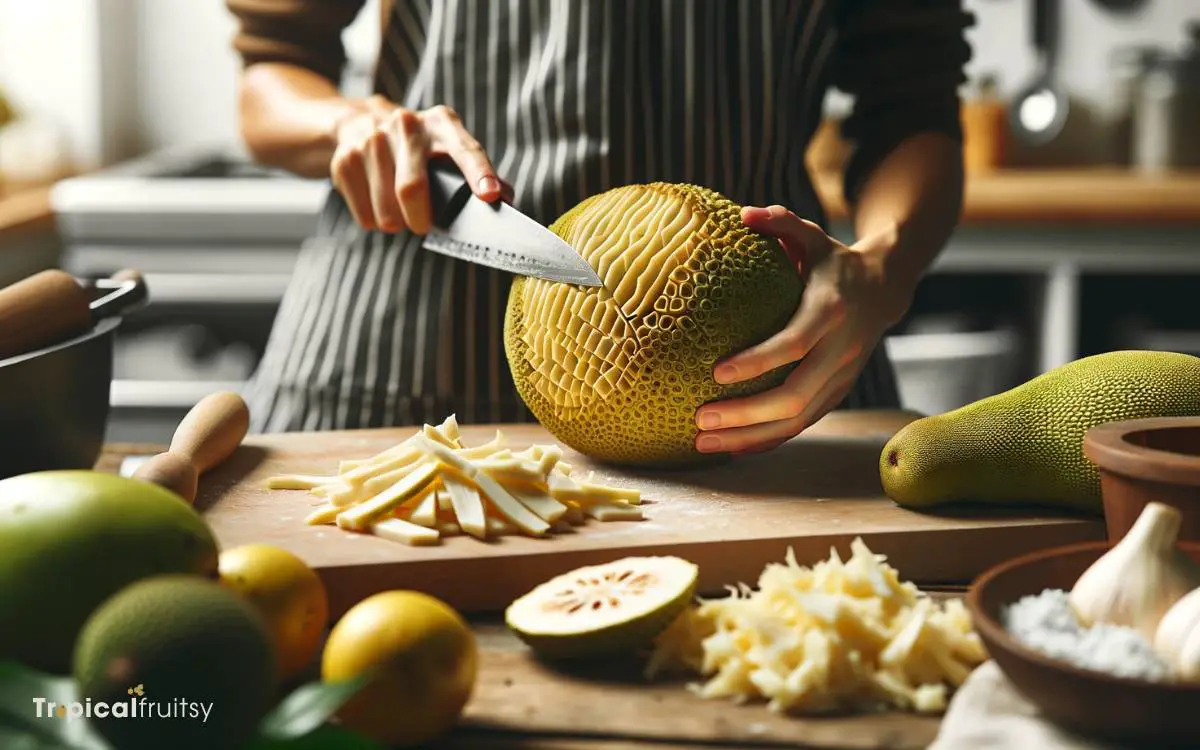
Once you have selected a suitable breadfruit, wash it thoroughly under running water to remove any surface dirt or debris before cutting. With meticulous care, slice off the stem and base of the fruit to create stable cutting surfaces.
Using a sharp knife, halve the breadfruit, and proceed to quarter it, ensuring the incisions are made decisively to preserve the integrity of the flesh. The core of the breadfruit is not suitable for your taco shells, so excise this part with precision.
Step 3: Crafting the Dough
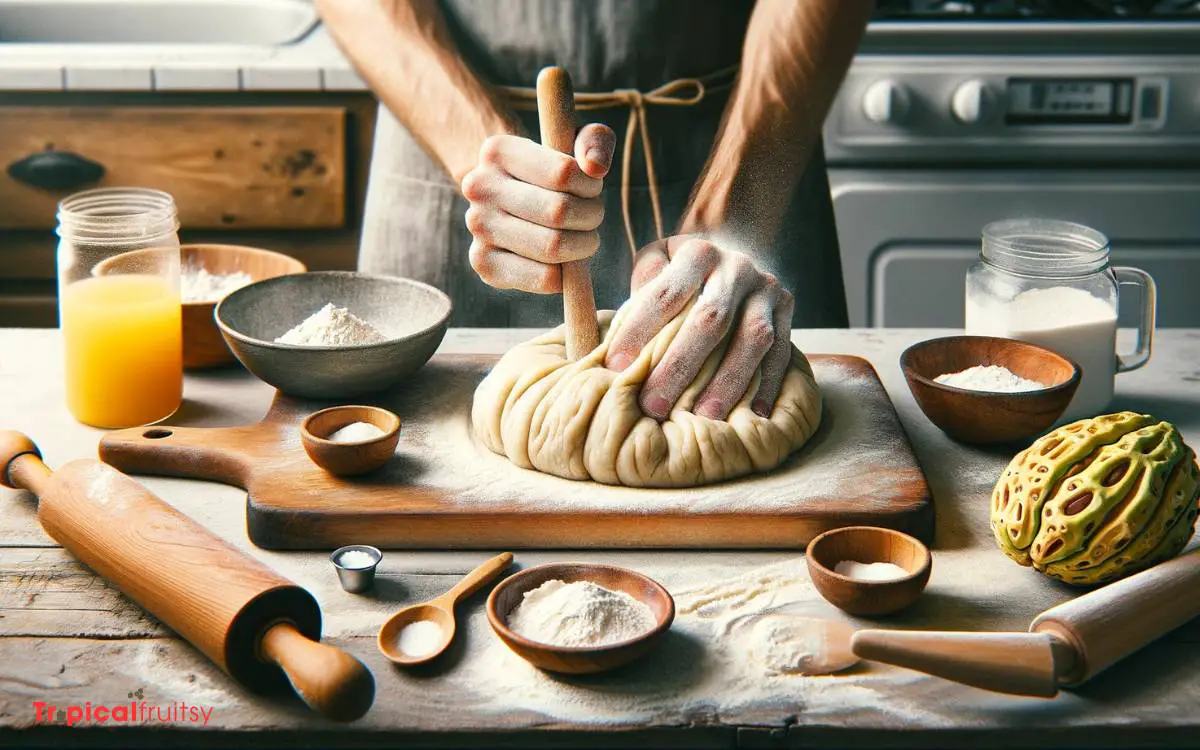
Blending the prepared breadfruit pieces into a smooth puree forms the initial step in crafting the dough for your taco shells.
This foundational process demands precision, as the consistency of the puree directly influences the texture of the final taco shells.
To achieve a dough conducive to forming sturdy yet pliable taco shells, consider the following technical aspects:
- Proportion: Measure the breadfruit puree accurately to ensure it binds well with the dry ingredients, creating a malleable and non-sticky dough.
- Consistency: Adjust the puree’s moisture content by adding water or flour to reach the optimal dough consistency similar to that of traditional corn masa.
- Mixing Technique: Employ a gentle folding method when incorporating the dry ingredients into the puree to maintain airiness and prevent overworking the dough, which can lead to toughness.
Step 4: Shaping Your Shells
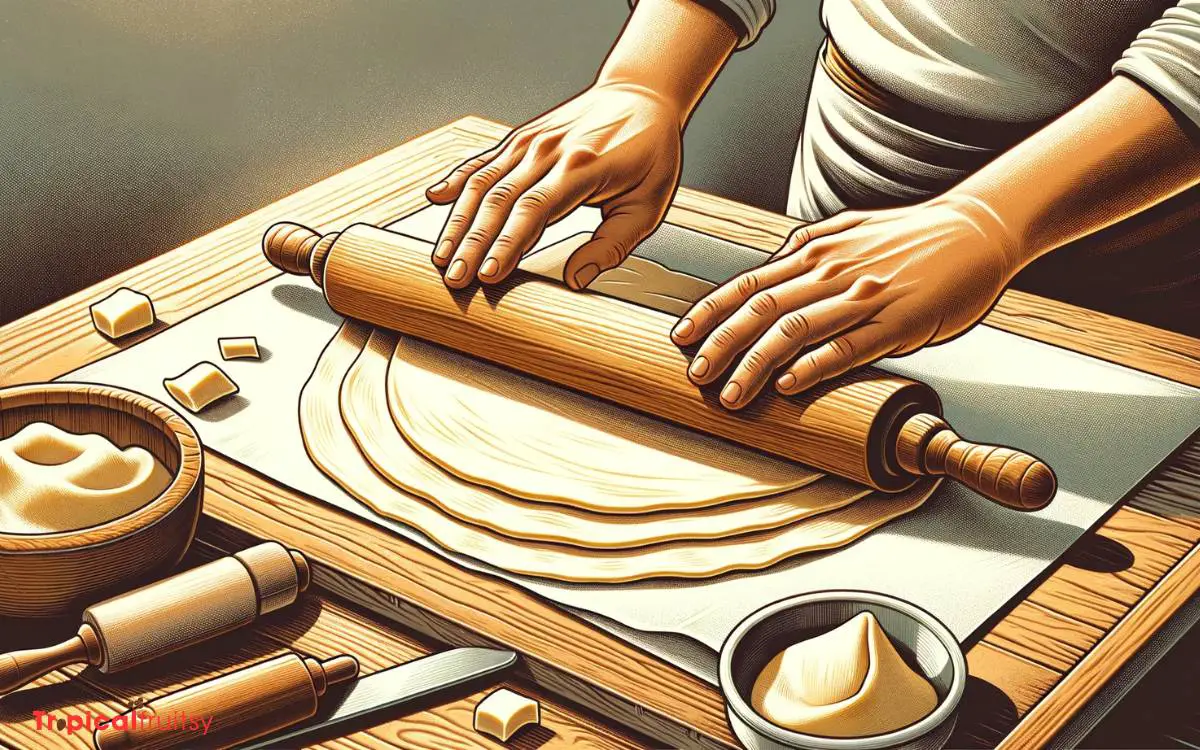
After preparing the dough, the next crucial step involves shaping the breadfruit mixture into perfect taco shells.
This is done using a combination of hand-pressing and rolling techniques to ensure uniform thickness and size.
Begin by dividing the dough into equal portions, each sufficient to form a single shell. Utilize a digital scale for accuracy to maintain consistency across all shells.
Flatten each portion manually to form a preliminary disc and then proceed to roll out the dough between two sheets of non-stick parchment paper.
Aim for a thickness of approximately 2-3 millimeters, which strikes a balance between structural integrity and delicate bite.
Employ a circular template or an inverted bowl to trim the edges, creating a symmetrical round that will drape elegantly over your chosen mold to form the quintessential taco shell curvature.
Step 5: Cooking the Taco Shells
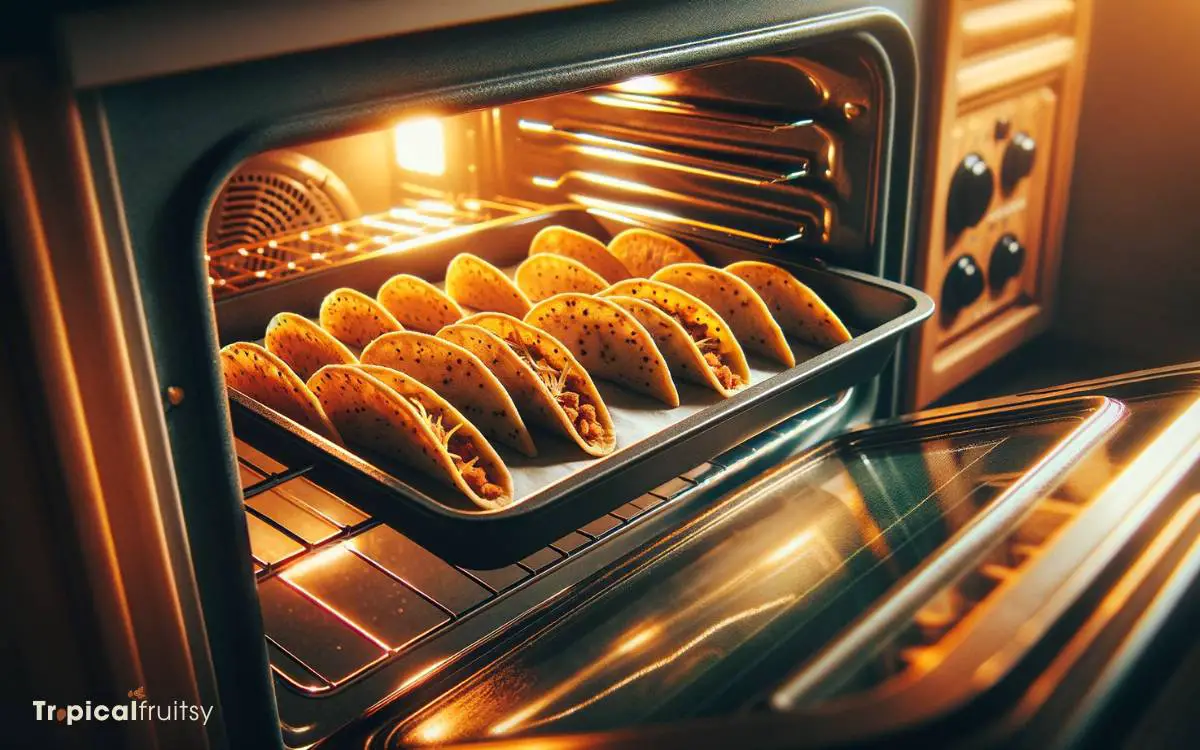
Transitioning from the shaping of breadfruit taco shells, the focus now shifts to their cooking – a process pivotal to the textural outcome and overall edibility.
The ripeness of the breadfruit plays a crucial role in determining the moisture content and pliability of the shells, requiring a discerning selection for optimal results.
Furthermore, maintaining a consistent shell thickness and precise frying temperature is essential to achieve a golden-brown finish with a balance between crunchiness and chewiness.
Choosing Right Breadfruit Ripeness
Selecting the optimal ripeness of breadfruit is crucial for achieving the desired texture and flavor in your taco shells.
Breadfruit undergoes significant changes in its properties as it matures, which affects its suitability for various culinary applications.
To ensure your taco shells have the ideal consistency and taste, consider the following criteria:
- Firmness: Select breadfruit that is firm to the touch. Overripe breadfruit becomes soft and is more suitable for sweet dishes rather than savory taco shells.
- Color: Look for a greenish-yellow hue without brown spots. As the breadfruit ripens further, it turns brown, indicating a softer, sweeter flesh not optimal for taco shells.
- Scent: A mature, ready-to-cook breadfruit emits a mild, sweet fragrance. An overpowering smell can denote overripeness, which may lead to a mushy texture when cooked.
Ideal Shell Thickness
Achieving the breadfruit taco shell’s ideal thickness is pivotal to ensuring a satisfying crunch and structural integrity when filled with toppings. Precise calibration of thickness is paramount; a measurement of 2-3 millimeters is optimal.
This specification balances the shell’s robustness with an airy texture, achieving a crisp bite that doesn’t overwhelm the palate.
To ascertain uniformity, employ a mandoline slicer, setting the blade to the recommended thickness, which will ensure consistent results.
During the cooking process, monitor the shells meticulously to prevent scorching, which compromises both flavor and texture. Utilize medium heat to encourage even browning and structural cohesiveness.
Upon completion, the shells should exhibit a golden hue, indicative of peak flavor development and textural finesse.
Frying Temperature Control
The chef’s vigilance in maintaining the oil’s temperature at 350°F (175°C) is crucial for frying the breadfruit taco shells to perfection.
This precise heat level ensures a crisp exterior while preventing the interior from becoming overly greasy or soggy. To achieve this, the use of a calibrated kitchen thermometer is essential.
Here are key steps to manage the frying temperature effectively:
- Preheat the Cooking Oil: Allow the oil to reach the target temperature before adding the breadfruit slices.
- Monitor Continuously: Use a digital thermometer to check the oil temperature regularly.
- Adjust the Heat: Regulate the stove’s flame to stabilize the temperature, compensating for any drops when the breadfruit is added.
Implementing these steps guarantees that each taco shell is cooked to a golden standard, providing a delicious and structurally sound base for your culinary creations.
Step 6: Customizing Shell Flavors
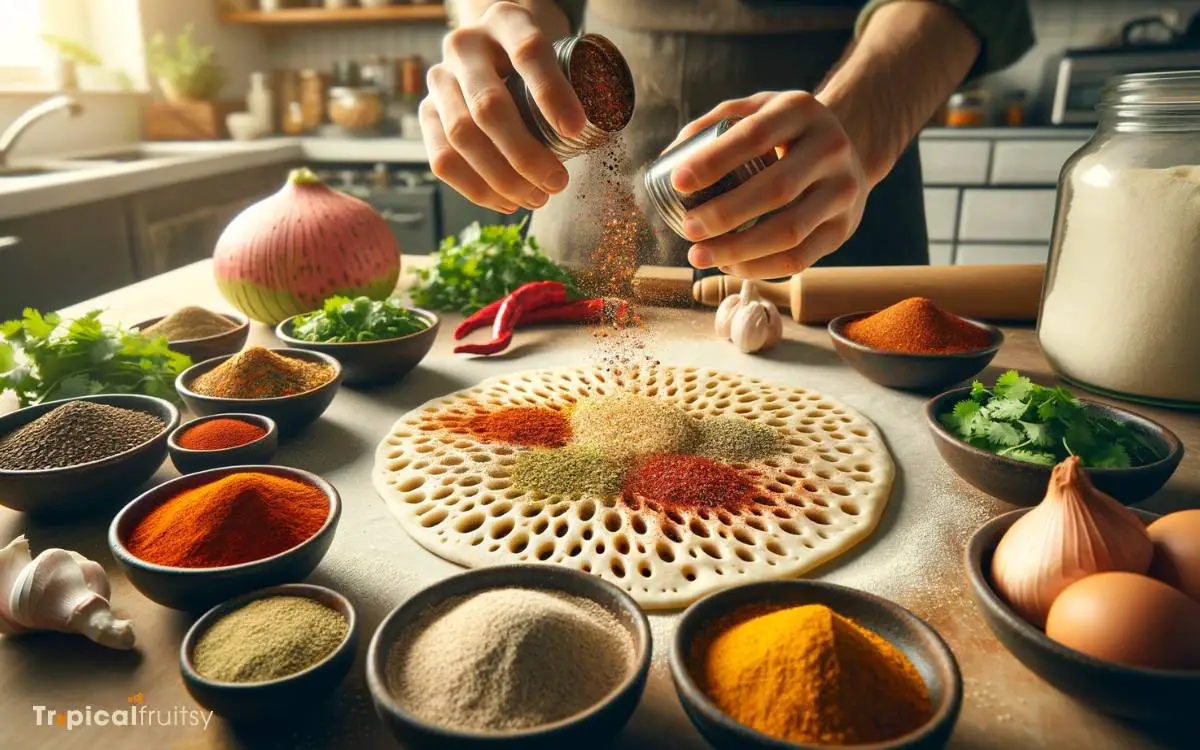
You can enhance your breadfruit taco shells by incorporating a variety of spices, herbs, or other flavorings to suit your taste preferences.
To infuse your shells with a bespoke flavor profile, consider the use of finely ground spices such as cumin, coriander, or smoked paprika, ensuring they are evenly distributed throughout the breadfruit dough for a consistent taste experience.
Herbs like cilantro or oregano can be finely chopped and integrated for a fresh, aromatic dimension. For a zestier twist, the zest of citrus fruits like lime or lemon can be grated into the mixture.
When experimenting with flavorings, it’s imperative to integrate them into the dough prior to the shaping and cooking process, thus allowing the heat to activate and release the full spectrum of flavors within your customized taco shells.
Can the Same Breadfruit Dough Used for Taco Shells Also be Used for Breadfruit Balls?
Yes, the same breadfruit dough used for taco shells can also be used for breadfruit balls. To make breadfruit balls, simply form the dough into small, bite-sized rounds and deep fry them until golden brown. For more detailed instructions on how to make breadfruit balls, refer to a trusted recipe.
Step 7: Serving and Storage Tips
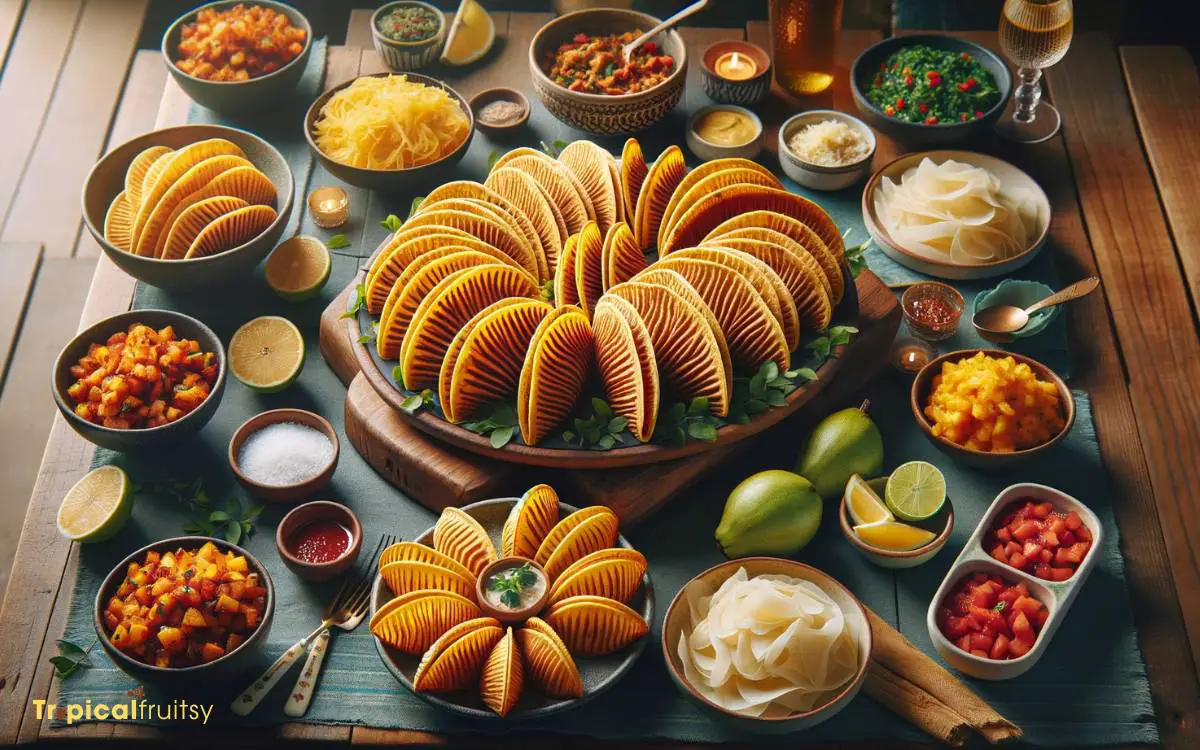
Upon completion of your breadfruit taco shells, it is essential to consider proper serving suggestions and storage techniques to maintain their freshness and quality.
Here are three pivotal guidelines:
Serve Immediately: Breadfruit taco shells exhibit optimal texture and taste when served immediately after cooling. This ensures a crisp bite and fresh flavor, integral to a superior gastronomic experience.
Airtight Storage: If there are leftovers, store breadfruit taco shells in an airtight container. This prevents moisture intrusion and staleness, sustaining the shells’ desirable crispness. Place parchment paper between the shells to avoid sticking.
Reheating Technique: To revive the freshness of the shells, briefly reheat them in a preheated oven at 350°F for a few minutes. This method restores the crispiness without overcooking, which is critical for maintaining the structural integrity of the taco shells.
Conclusion
The creation of breadfruit taco shells represents not merely a culinary endeavor but a fusion of tradition and innovation.
The meticulous process of selection, preparation, and cooking culminates in a unique vessel for flavors. As these shells cradle the chosen ingredients, they symbolize the transformative potential of alternative food sources.
The final product, an edible tapestry of taste and texture, invites a rethinking of the boundaries of conventional gastronomy.

